Introduction to Abaqus Explosion package
An explosion is a sudden release of energy, usually accompanied by a loud noise, heat, and pressure waves. Explosions can be caused by various factors, including chemical reactions, combustion, nuclear reactions, or mechanical failure. Accurate simulation of explosions is crucial to minimize the impact of such incidents. Explosion simulation involves modeling the complex interactions of blast waves, shock waves, and debris with the surrounding environment. By simulating explosions, engineers and scientists can identify potential risks and develop effective safety measures. Abaqus explosion is fully described in this package.
Abaqus is a popular software tool used for explosion simulation, which provides advanced capabilities for modeling and analyzing the effects of explosions on structures and materials. Abaqus allows for the simulation of complex interactions between the blast wave and structures, including plastic deformation, fracture, and failure.
This tutorial is an elementary level of explosion theories. If you want to learn more about the supersonic explosion or subsonic, it is necessary to use an advanced training package for the explosion. In the below paragraphs, you will see a brief explanation of workshops.
Workshop 1: Explosion against a brick wall
In this simulation, an explosion over the brick wall has been analyzed.
Dynamic explicit is appropriate for this type of analysis. To have the right model, it is needed to define special boundary conditions in this problem. Also, explosion loads having special amplitude are used to model explosion.
Workshop 2: underwater explosion
This example demonstrates how ABAQUS can be used to predict the long-duration response of submerged structures that experience loading by a wave resulting from an underwater explosion (UNDEX). The model is supposed to have damage with regard to explosion effects and plastic strain and ductile damage is used in modeling to demonstrate a realistic behavior. A special boundary condition is necessary to define the explosion phenomenon correctly.
Workshop 3: Air blast explosion simulation inside a RC room | CONWEP Abaqus Model
This tutorial focuses on investigating an air blast explosion that occurs within a reinforced concrete room using Abaqus software. To simulate the behavior of the room, a three-dimensional model is created, and CDP material is used to predict the extent of compressive and tensile damage. The reinforcement is modeled as a beam part using wire elements and steel material. The analysis uses a dynamic explicit procedure, and the air blast phenomenon is simulated using the CONWEP Abaqus model. During the analysis, the concrete room and beam experience a significant amount of pressure, resulting in both tensile and compressive damage to the room.
Workshop 4: Air blast simulation over a composite slab(UHPC-Steel) using cohesive interaction
This tutorial involves simulating an air blast explosion over a campsite slab made of UHPC-Steel using cohesive interaction in Abaqus software. The two steel covers are modeled as three-dimensional solid parts, while the Ultra-High-Performance concrete is also modeled as a three-dimensional solid part.
Tailored cementitious materials, like Ultra-High-Performance Concrete (UHPC), have the potential to significantly enhance the blast resistance of structural panels. UHPC possesses advantageous material properties such as high tensile and compressive strengths, ductility, and durability, making it an attractive option for engineering structures, particularly in bridge engineering. The Concrete Damaged Plasticity (CDP) model is commonly used to simulate UHPC behavior. This model is a plasticity-based, continuum damage model for concrete, which assumes that the two primary failure mechanisms are tensile cracking and compressive crushing of the concrete material. To model the UHPC slab, the CDP model is selected, which can predict both tensile and compressive damage. An elastic and plastic material model is used to simulate the behavior of steel. The dynamic explicit step is suitable for this type of analysis. Cohesive interaction is assigned to the steel-concrete contact surfaces using stiffness, fracture stress, and energy to investigate the separation during the blast. The CONWEP Abaqus blast technique is employed to model the TNT and its location. The two sides of the slab are assigned a fixed boundary condition, and a fine mesh is necessary to obtain accurate results.
Following the simulation, all outcomes, including stress, strain, tensile and compressive damage, displacement, and more, can be obtained.
Workshop 5: Subsurface explosion simulation on buried steel pipelines using the Eulerian-Lagrangian method
The significance of buried pipelines cannot be overstated as they play a crucial role in distributing vital resources such as water, gas, oil, etc. However, underground gas pipelines that are pressurized are at risk of being damaged by accidental explosions in various industries and locations such as explosives factories, public works, quarries, open pit mines, and even intentional explosions near the pipeline. Unfortunately, there has been a rise in terrorist attacks and sabotage on oil and gas transmission pipelines in recent times, which has resulted in multiple explosions along their routes. In this tutorial, a coupled 3D finite element model using a combined Eulerian-Lagrangian approach has been developed to simulate CEL explosions. The simplified Johnson-Cook material model, JWL equation of state, and ideal gas equation of state were used to model the behavior of the pipe material, charge detonation, and air, respectively. Additionally, the behavior of the soil mass was modeled using Coulomb-Mohr plasticity.
Workshop 6: Damage analysis of RC containment structure under internal explosion
It is imperative to construct and operate a reinforced concrete containment for nuclear power plants to safeguard both the population and environment against uncontrolled radioactive release during severe internal or external accidents like earthquakes, large fires, or jet aircraft impact, which may occur during the plant’s operational lifetime. Precisely determining the response of the reinforced concrete containment to blast loading parameters for a specific distance scale is essential. Most parameters for modeling the interactions of blast shock waves are available and have been extensively documented. This tutorial investigates the dynamic response and damage mechanism of the reinforced concrete containment under internal blast loading at varying distance scales. The extent of concrete cracking, the stress in steel bars and concrete after yielding, and deflections are presented as measures of the effects of an explosion inside the containment. This tutorial specifically examines a CEL explosion within the RC Concrete vessel, and the volume fraction method has been implemented to model the Eulerian explosion.
It would be useful to see Abaqus Documentation to understand how it would be hard to start an Abaqus simulation without any Abaqus tutorial.

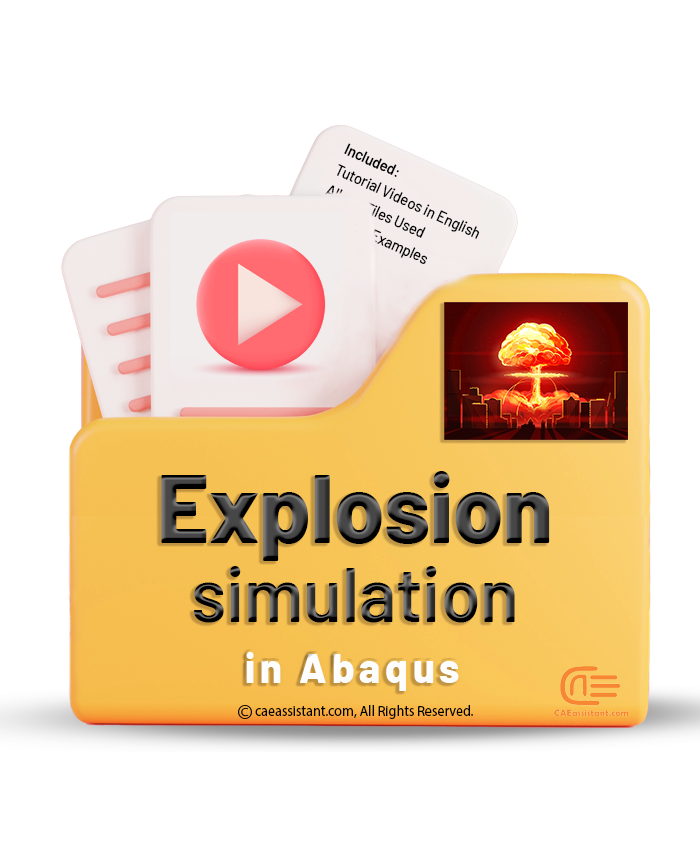

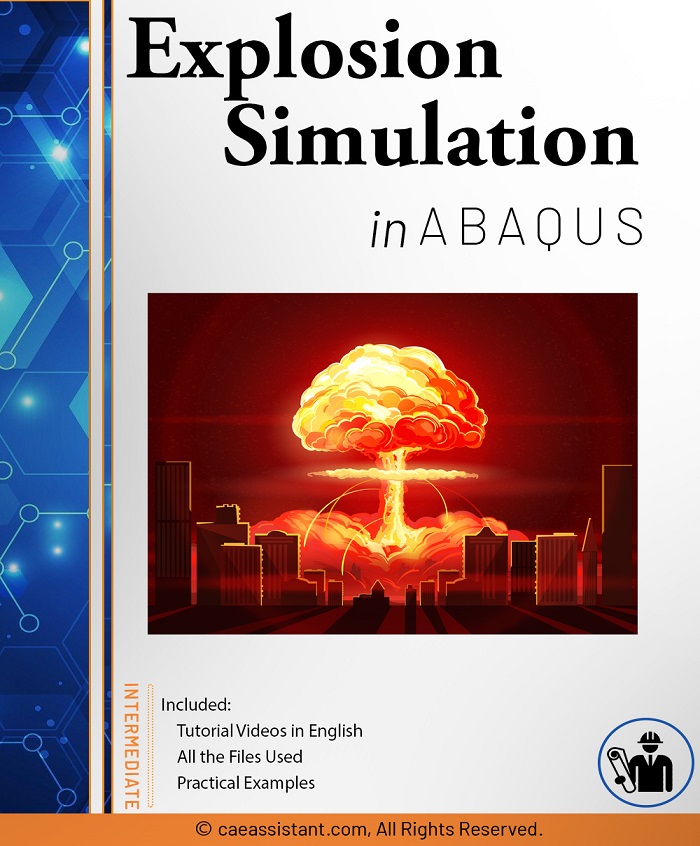




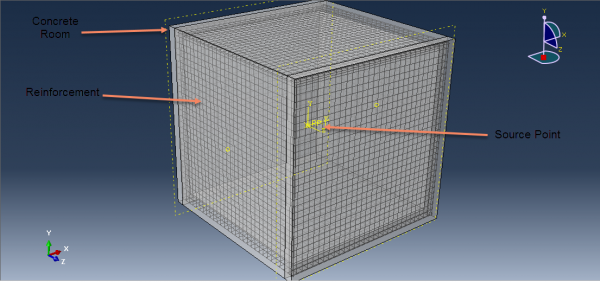
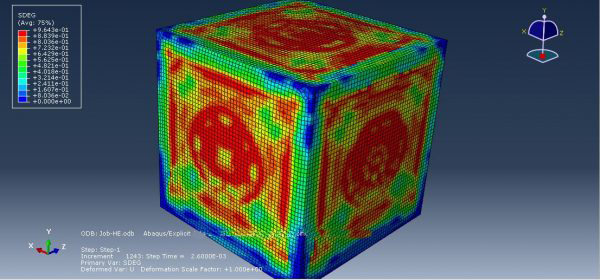
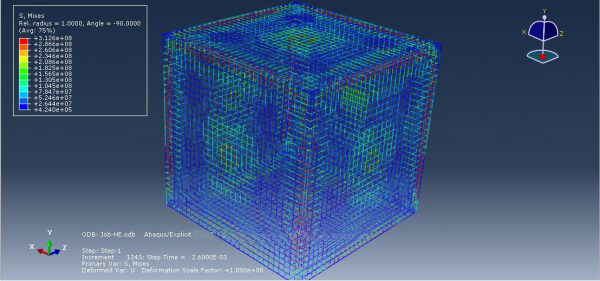
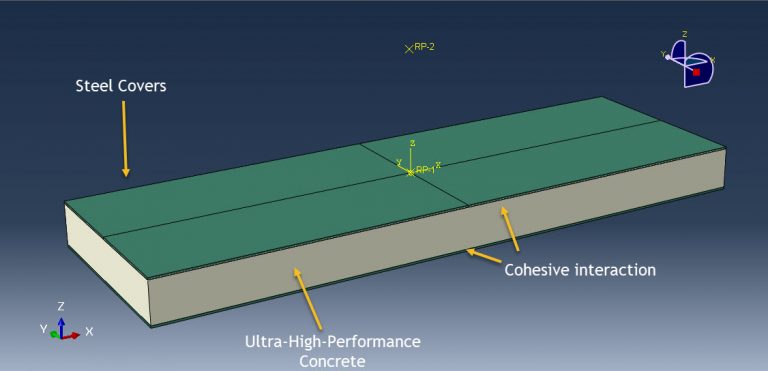
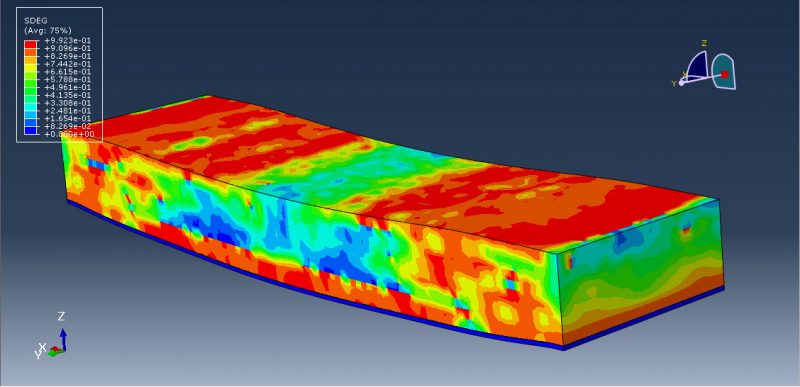
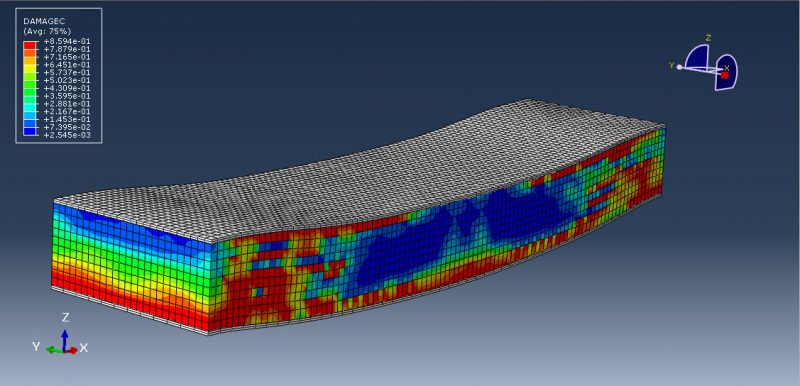
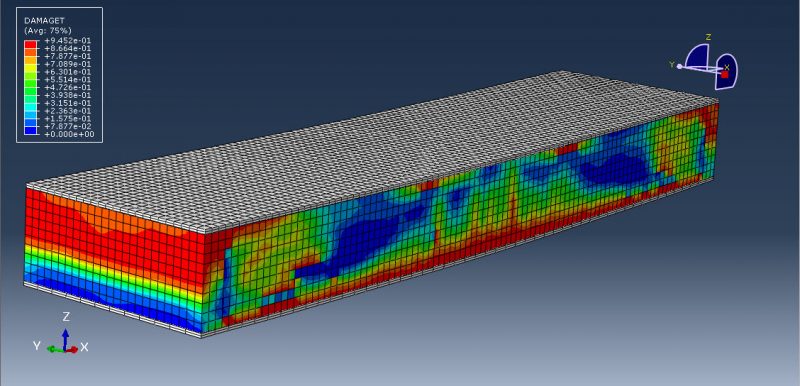
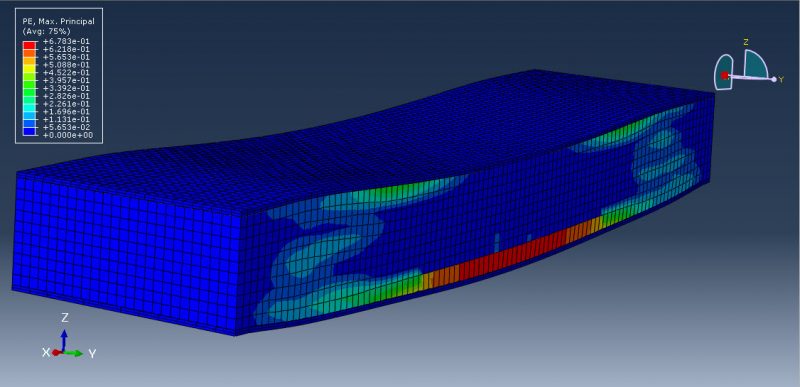
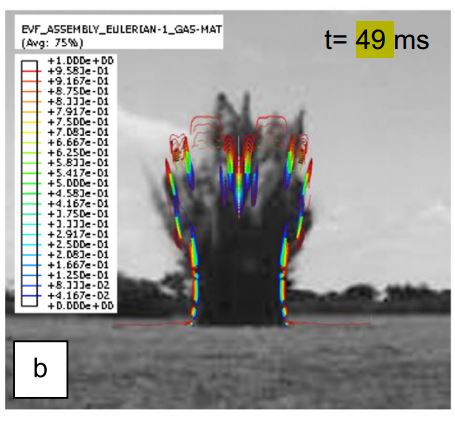
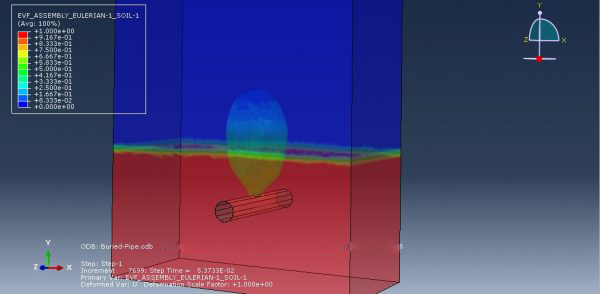
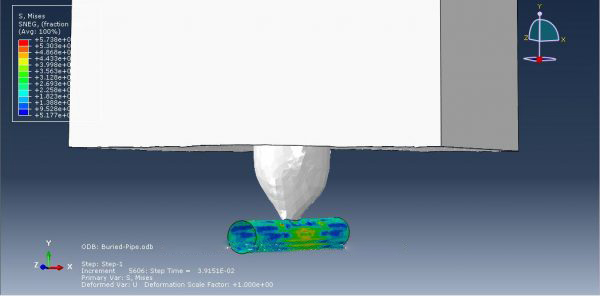
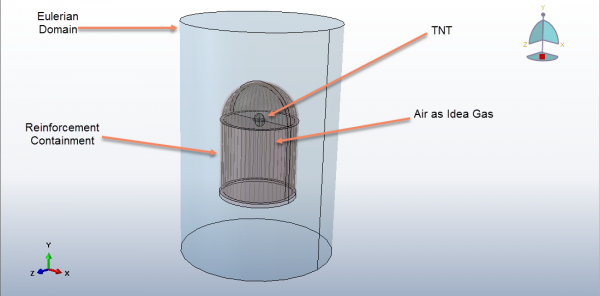
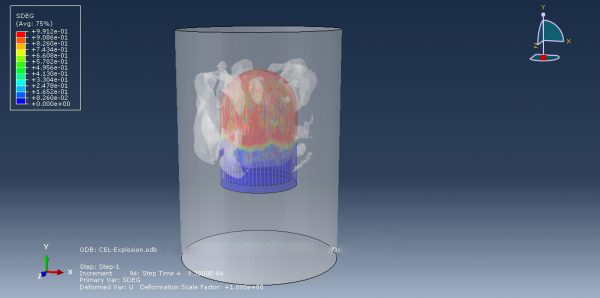
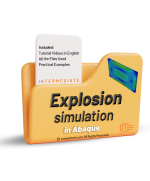
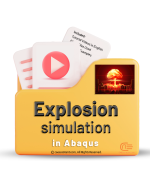
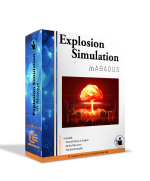
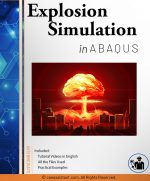












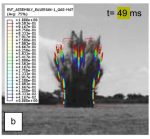




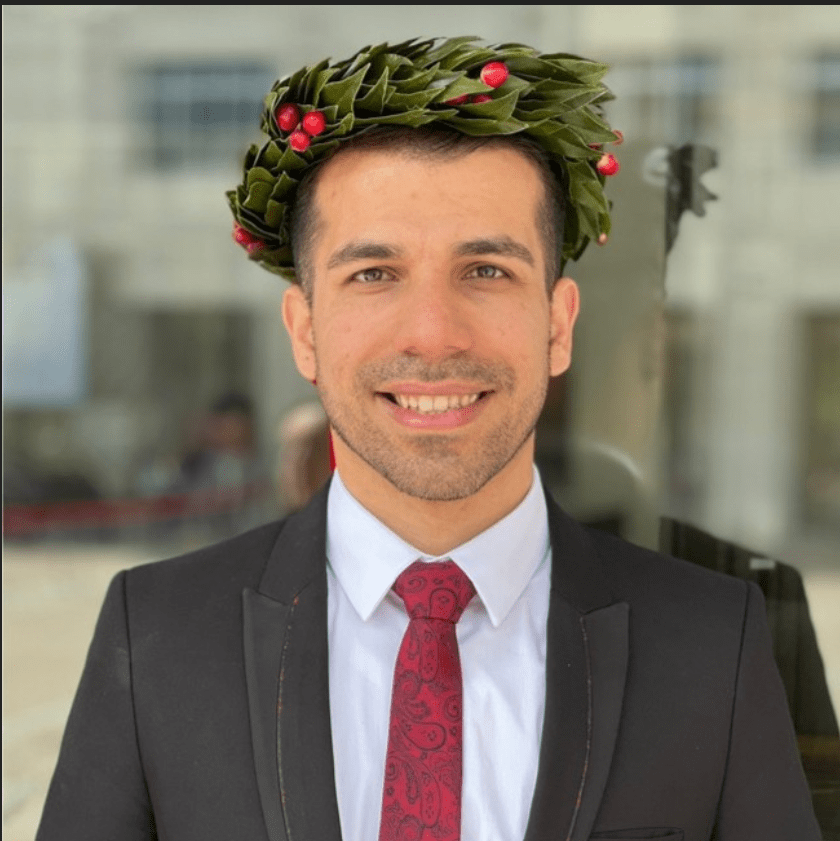
hakim haddad –
Great course for a beginner who wants to step into the world of explosion simulation in Abaqus. Enjoyed a lot.